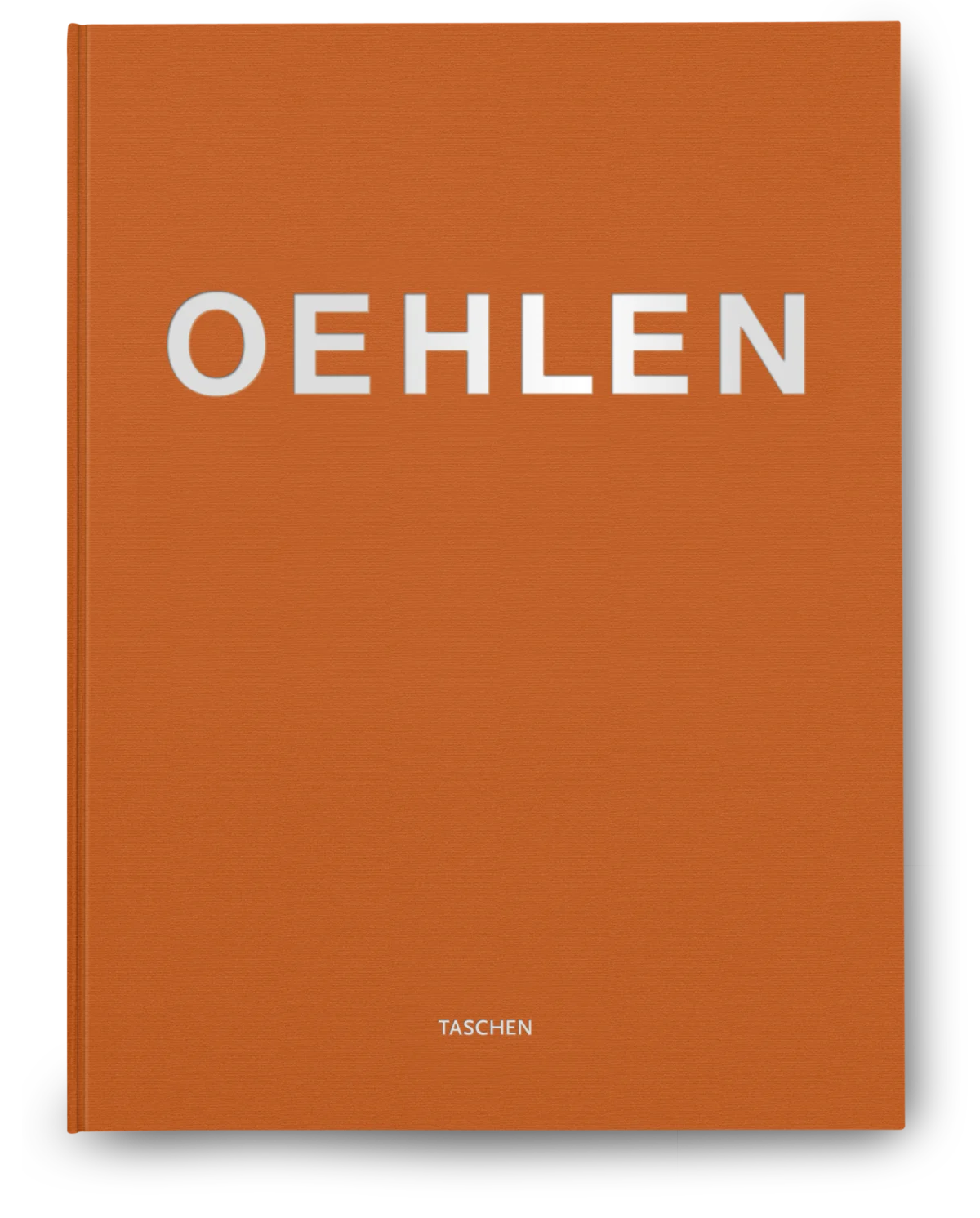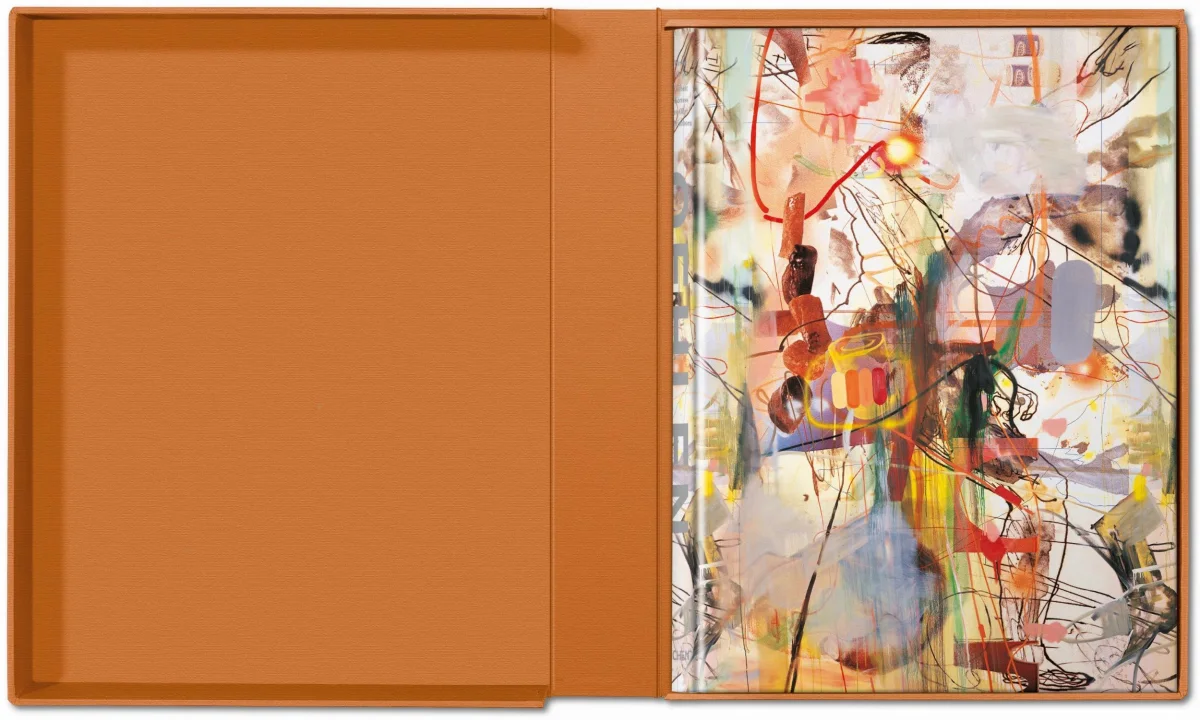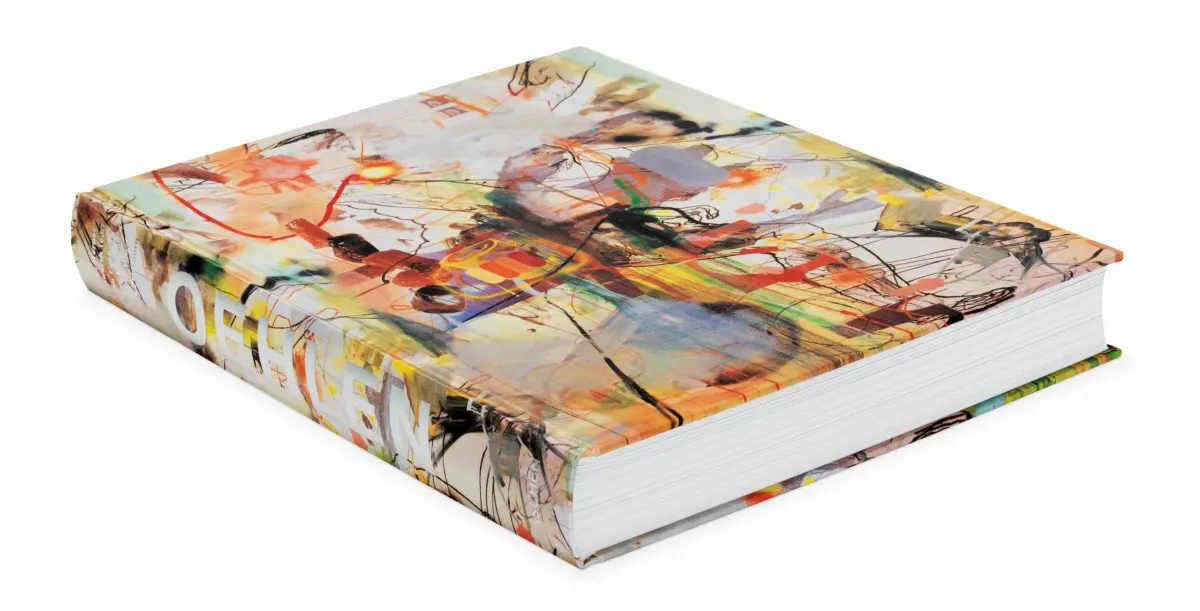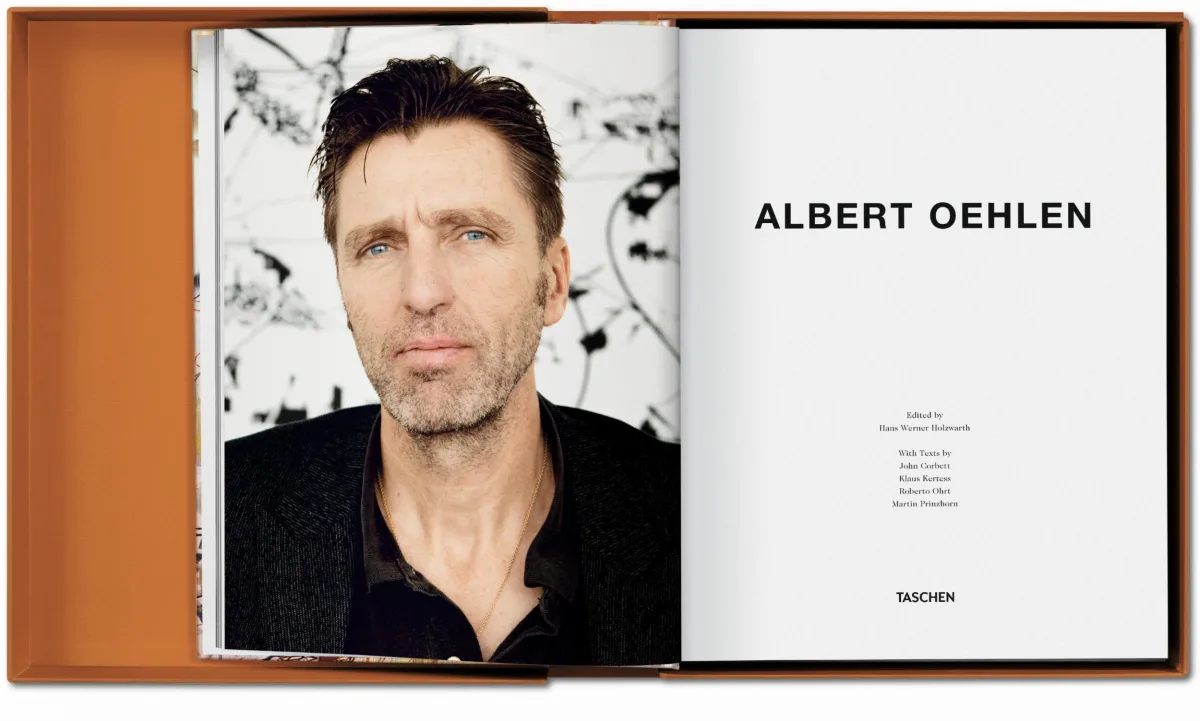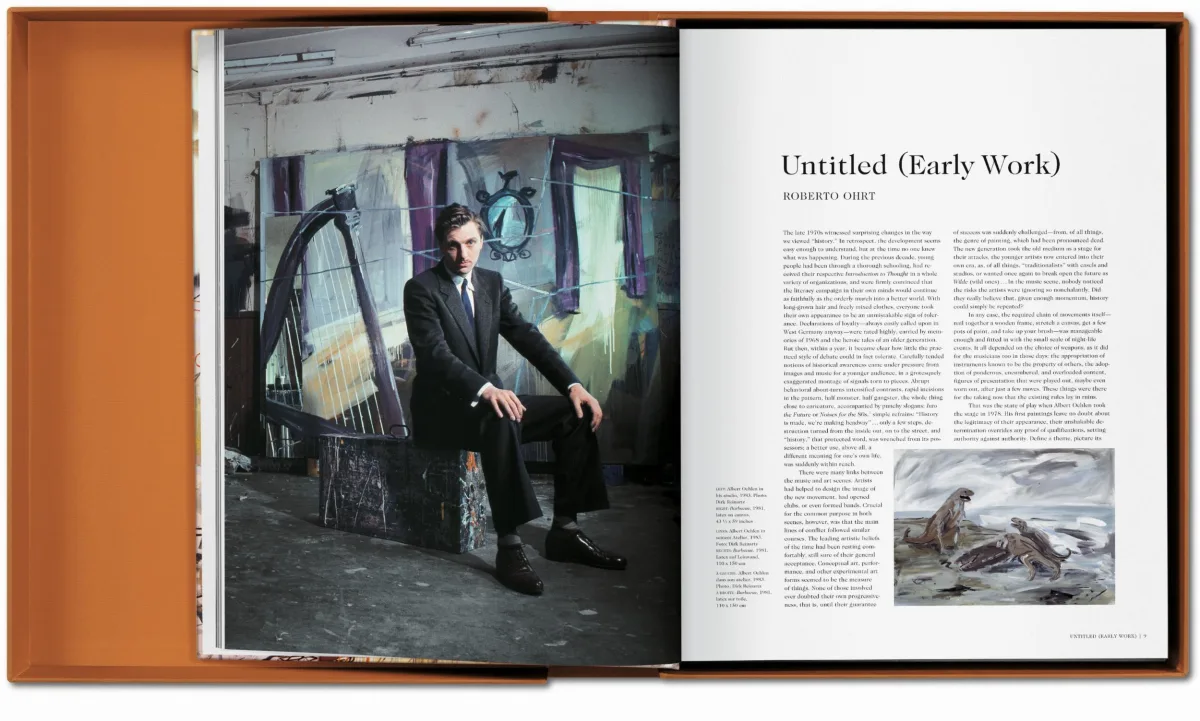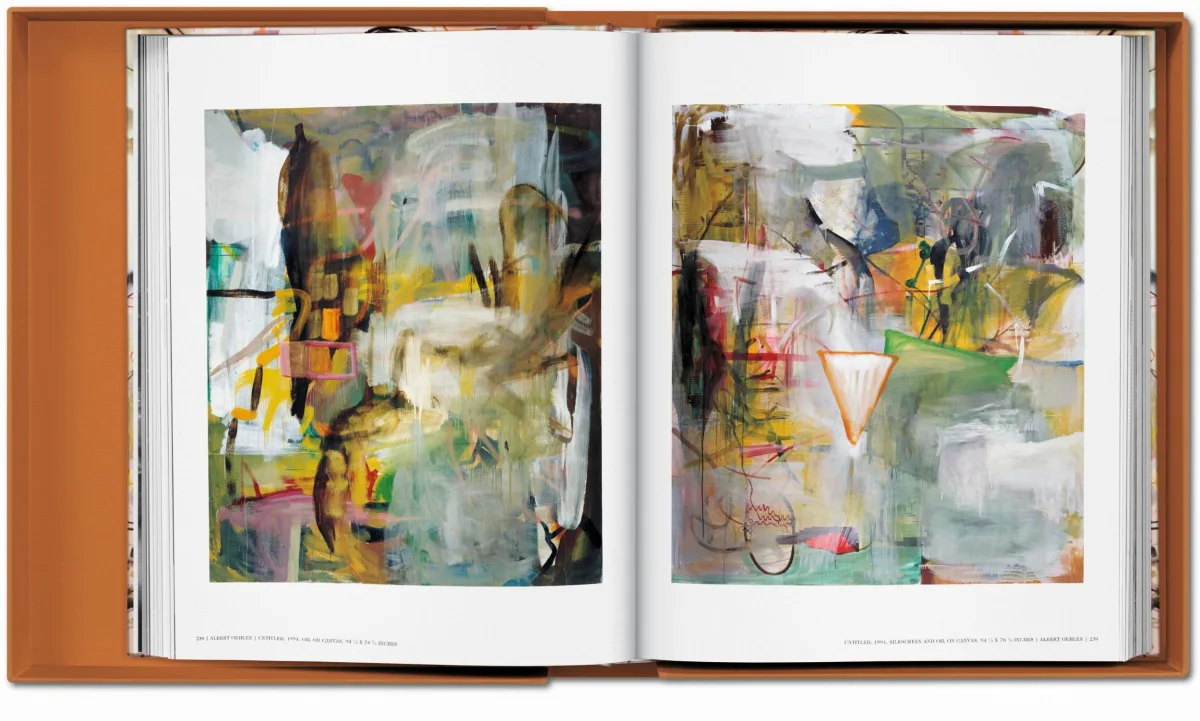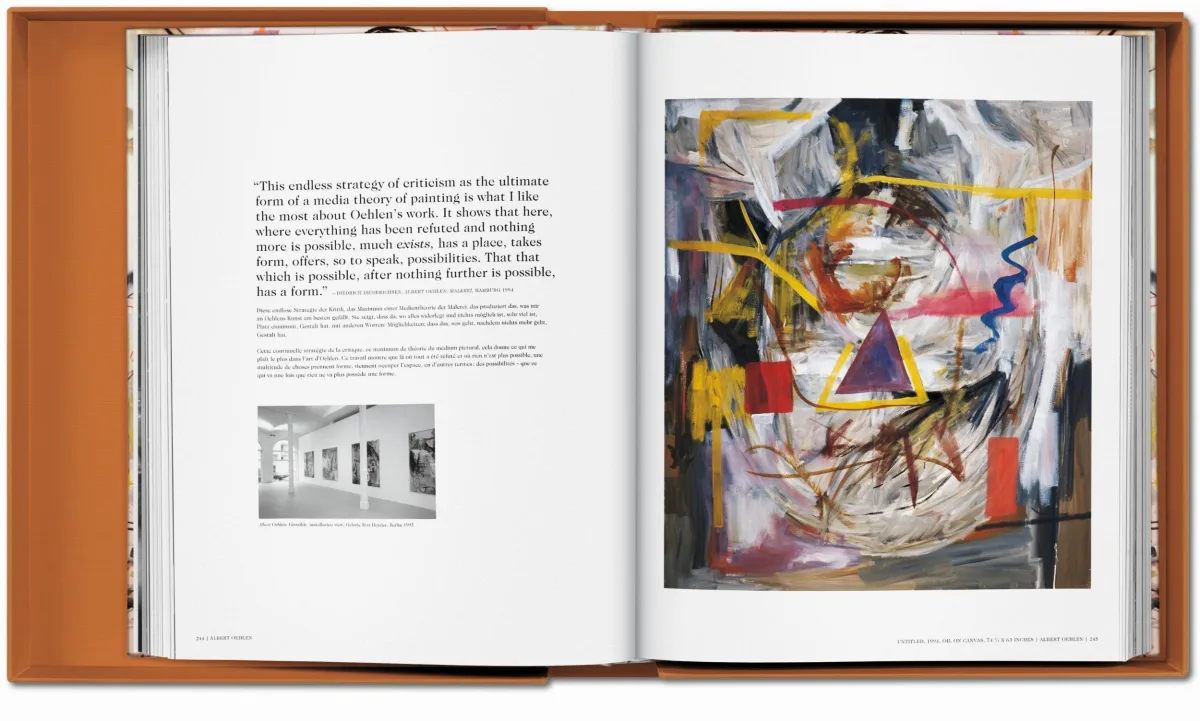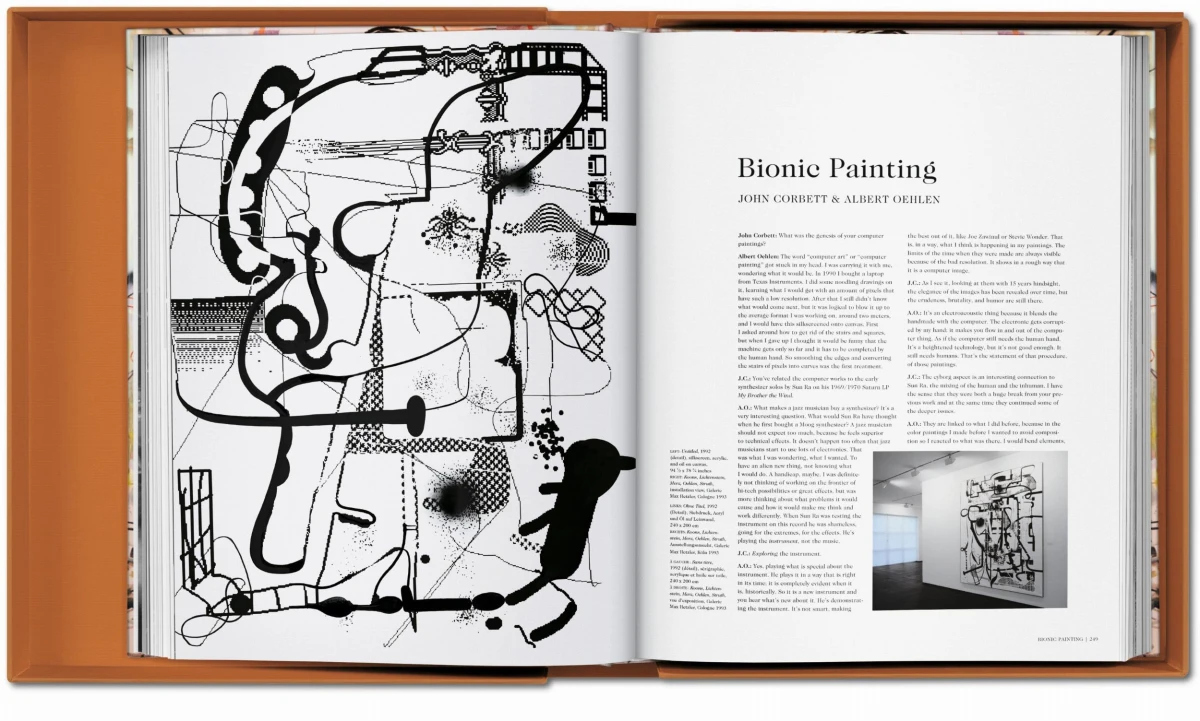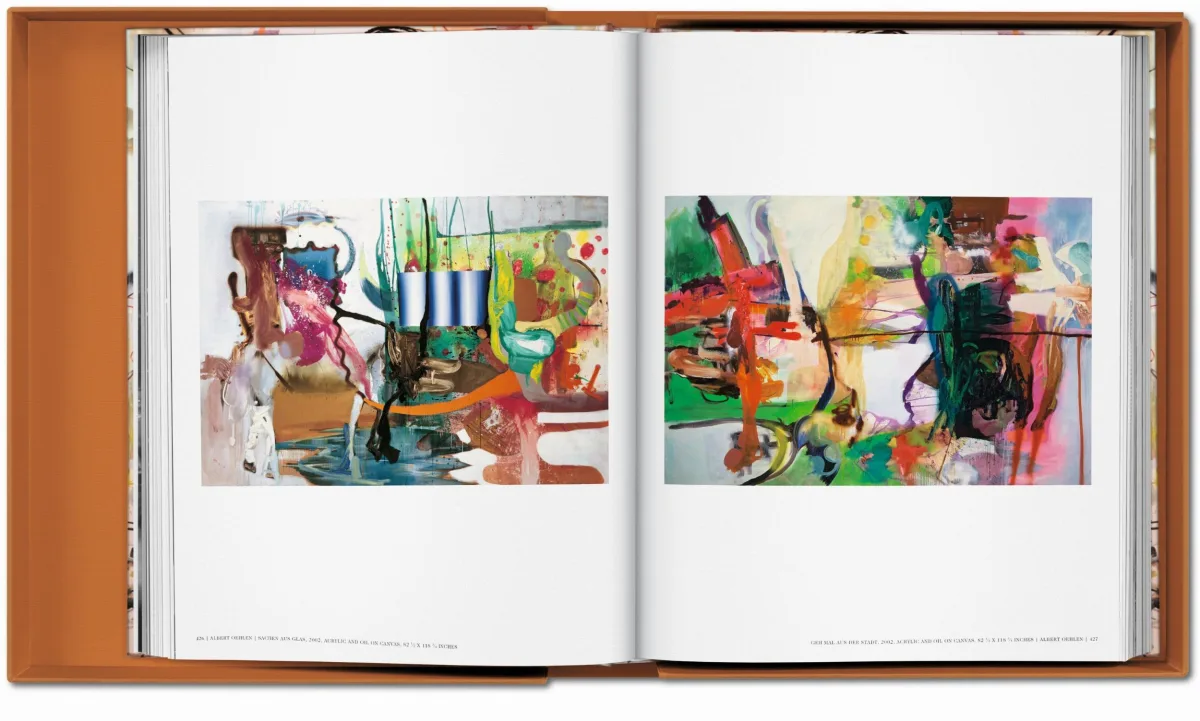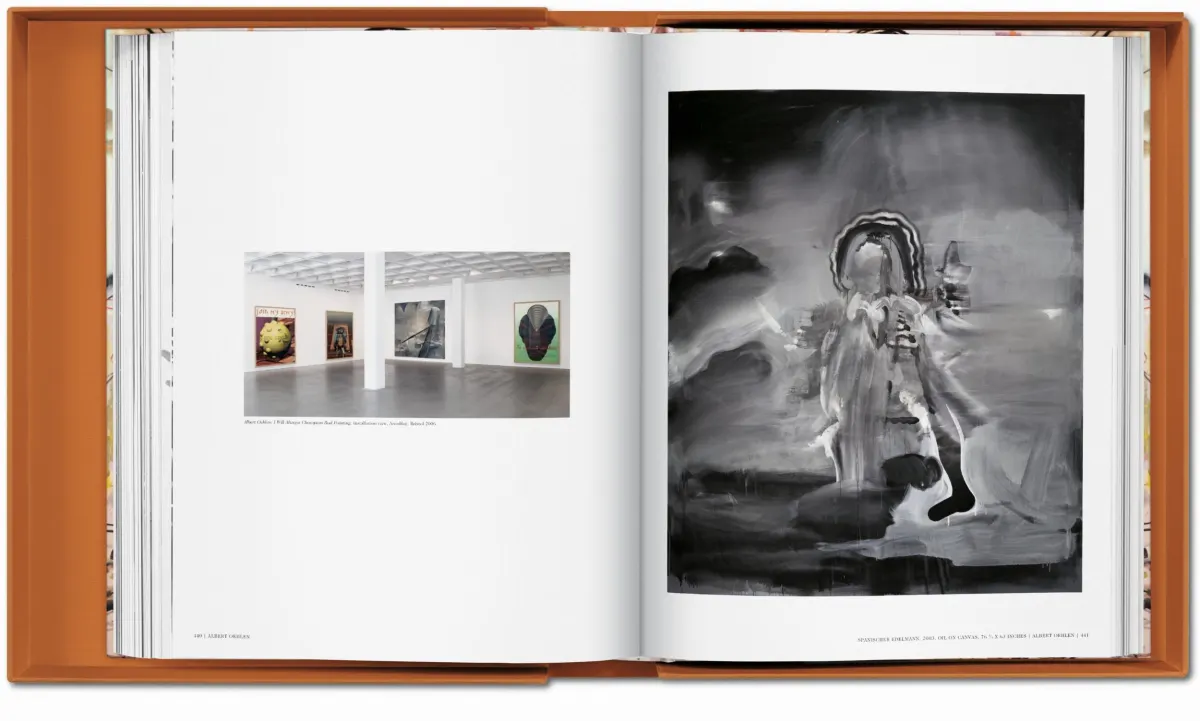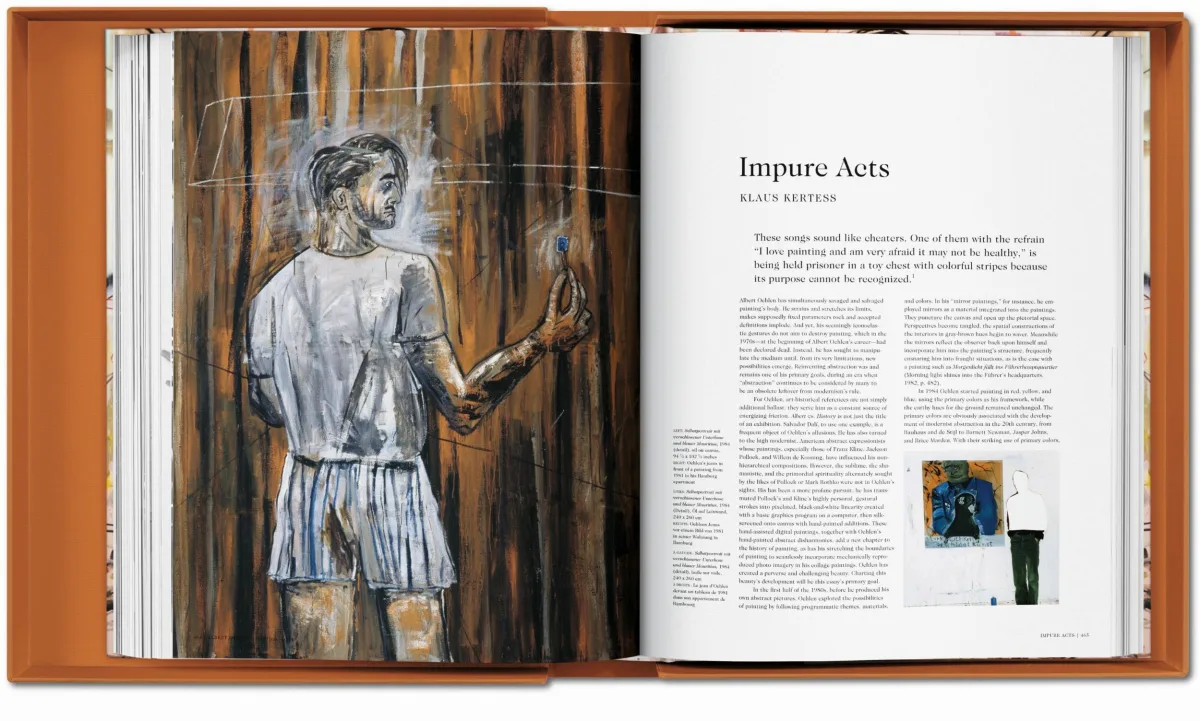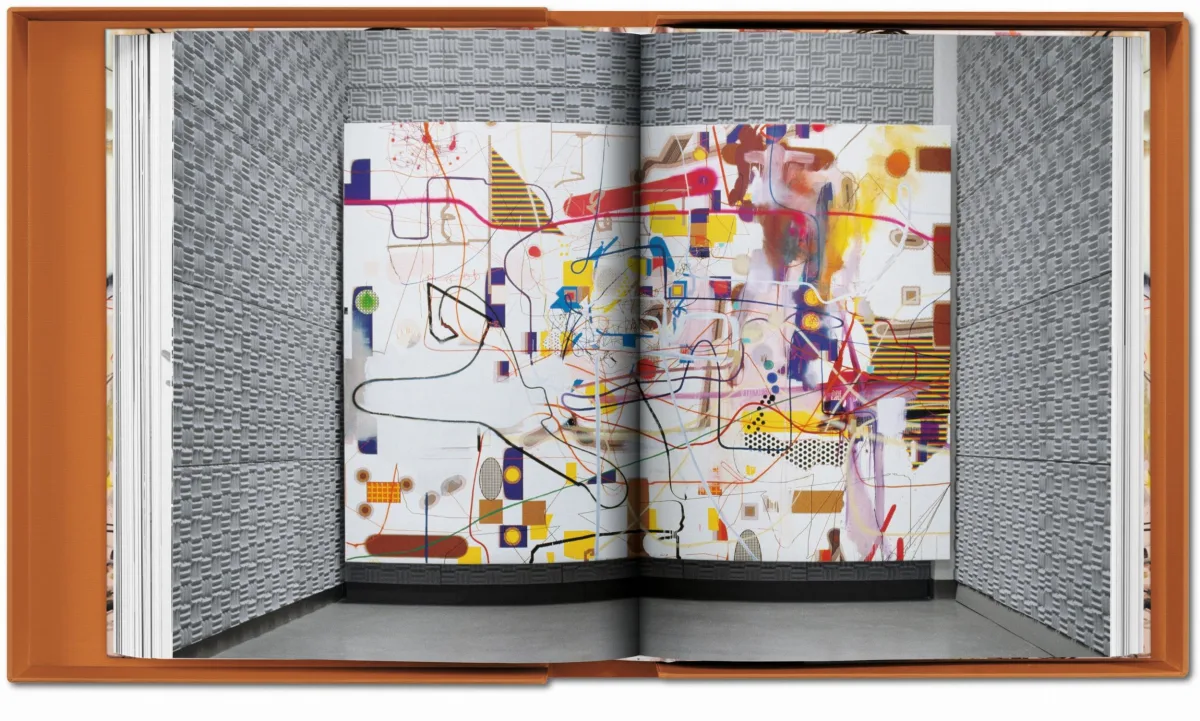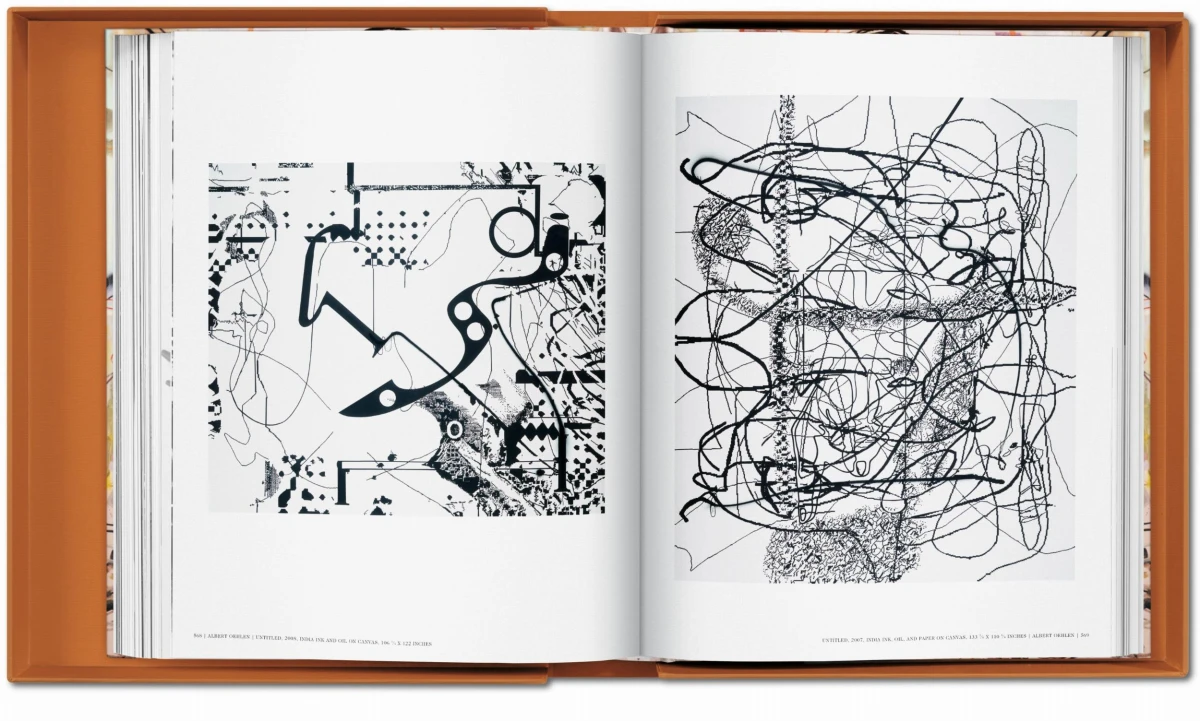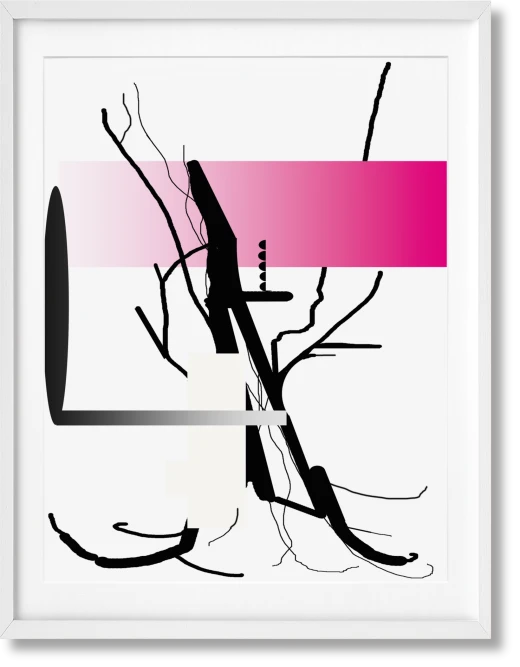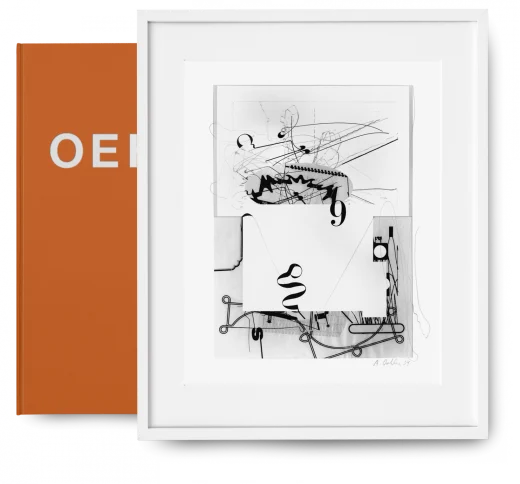
1 / 13
XXL
XXL books are a minimum 39 cm (15.4 in.)
Albert Oehlen
2500
From mirrors as canvases to computer paintings, this is the definitive monograph of Albert Oehlen’s work to date. In the so-called death of painting, Oehlen found instead its enlivenment, expanding his practice by setting rules explicitly designed to overcome convention. A must-have for anyone serious about contemporary art and the future of painting practice.
Limited Collector's Edition of 1,000 numbered copies, numbered and signed by Albert Oehlen.
Limited Collector's Edition of 1,000 numbered copies, numbered and signed by Albert Oehlen.
Edition of 1,000Hardcover in clamshell box, 13.0 x 17.3 in., 27.48 lb, 660 pages
“Printed in an extra large format in an edition of 1,000 each signed by the iconoclastic German painter, this is no ordinary monograph.”
XXL
XXL books are a minimum 39 cm (15.4 in.)

Albert Oehlen
2500The definitive monograph of Oehlen’s work to date
Limited to 1,000 numbered copies, each signed by Albert Oehlen. Also available as an Art Edition limited to 100 copies, each signed by the artist and accompanied by an original artwork
Often wryly funny and just as smart, Albert Oehlen’s paintings play the medium for all it’s worth—and then some. After realizing that the so-called death of painting freed him to explore “the number of aspects through which one could expand painting,” Oehlen started work on a wide variety of figurative and non-objective offerings, in what he has called his “post-non-figurative” art. The artist continuously challenges himself, setting up rules that force him to overcome convention and his own routine in order to arrive at a satisfying image. During his career he has chosen to paint only in primary colors or in gray, to integrate mirrors into his canvases, or to take up computer painting when the first PCs became available. In his most recent work Oehlen expands painting through the use of advertising posters whose in-your-face aesthetics he transforms with subtle brushwork. Never without a touch of tongue-in-cheek humor, his work seems to be winking at us as it dares us to change the way we perceive an image.
This XL monograph covers the entire scope of Oehlen’s oeuvre: Roberto Ohrt discusses the early years, when Oehlen came into his own alongside Kippenberger, Büttner, and others, part of a scene that broke rules in art and rock music. Klaus Kertess examines the years from 1988 onwards, when Oehlen saw himself more self-consciously as a painter and started his first abstract works, then continued to probe the limits of the medium. Martin Prinzhorn and John Corbett take a close look at aspects of Oehlen’s iconography, and Oehlen discusses his computer paintings in a conversation with Corbett. An exhaustive biography and bibliography round out this comprehensive study. While Oehlen fans will rejoice at the publication of this breathtaking book, no one with an interest in contemporary art should pass up this unique opportunity to discover Oehlen’s remarkable body of work.
“The most resourceful abstract painter alive.” —The New Yorker
Often wryly funny and just as smart, Albert Oehlen’s paintings play the medium for all it’s worth—and then some. After realizing that the so-called death of painting freed him to explore “the number of aspects through which one could expand painting,” Oehlen started work on a wide variety of figurative and non-objective offerings, in what he has called his “post-non-figurative” art. The artist continuously challenges himself, setting up rules that force him to overcome convention and his own routine in order to arrive at a satisfying image. During his career he has chosen to paint only in primary colors or in gray, to integrate mirrors into his canvases, or to take up computer painting when the first PCs became available. In his most recent work Oehlen expands painting through the use of advertising posters whose in-your-face aesthetics he transforms with subtle brushwork. Never without a touch of tongue-in-cheek humor, his work seems to be winking at us as it dares us to change the way we perceive an image.
This XL monograph covers the entire scope of Oehlen’s oeuvre: Roberto Ohrt discusses the early years, when Oehlen came into his own alongside Kippenberger, Büttner, and others, part of a scene that broke rules in art and rock music. Klaus Kertess examines the years from 1988 onwards, when Oehlen saw himself more self-consciously as a painter and started his first abstract works, then continued to probe the limits of the medium. Martin Prinzhorn and John Corbett take a close look at aspects of Oehlen’s iconography, and Oehlen discusses his computer paintings in a conversation with Corbett. An exhaustive biography and bibliography round out this comprehensive study. While Oehlen fans will rejoice at the publication of this breathtaking book, no one with an interest in contemporary art should pass up this unique opportunity to discover Oehlen’s remarkable body of work.
“The most resourceful abstract painter alive.” —The New Yorker
The artist
Albert Oehlen was born in Krefeld, Germany, in 1954. After graduating from the Hochschule für Bildende Kunst, Hamburg, in 1978, he came to prominence in the early 1980s, and has exhibited internationally. Influenced by Georg Baselitz, Sigmar Polke and Gerhard Richter, Oehlen's work focuses on the process of painting, exposing its structural elements. He lives in Switzerland.
The authors
John Corbett is a curator and writer based in Chicago. He is the co-owner of Corbett vs. Dempsey Gallery, author of Extended Play (1994), Microgroove: Forays into Other Music (2015), and Vinyl Freak: Love Letters to a Dying Medium (2017), and he produces CDs for Corbett vs. Dempsey’s label.
Art writer and curator Klaus Kertess has previously published monographs on Brice Marden and Joan Mitchell and recently written catalog essays on Lari Pittman, Chris Ofili, and Willem de Kooning, as well as contributing essays to books on John Chamberlain and Matthew Ritchie.
Martin Prinzhorn is a linguist at the University of Vienna and an art critic who regularly publishes essays in art books and magazines. Among many others, he has written on Georg Baselitz, Angela Bulloch, Lecia DoleRecio, Will Fowler, Sarah Lucas, and Martin Kippenberger.
Roberto Ohrt, born 1954 in Santiago de Chile, lives in Hamburg in Germany, and since 1990 has written on art, curated numerous exhibitions, and co-founded the Akademie Isotrop (1996–2001). Since 2001, he edits artist’s books through the Silverbridge publishing house in collaboration with Juli Susin.
The editor
Hans Werner Holzwarth is a book designer and editor specializing in contemporary art and photography. His TASCHEN publications include the Collector’s Editions Jeff Koons, Christopher Wool, Albert Oehlen, Neo Rauch, Ai Weiwei, Beatriz Milhazes, Julian Schnabel, Georg Baselitz, Glenn Brown, the David Hockney SUMO A Bigger Book, as well as monographs such as the XXL-sized Jean-Michel Basquiat.
Albert Oehlen
Edition of 1,000Hardcover in clamshell box, 33 x 44 cm, 12.46 kg, 660 pagesISBN 978-3-8228-4945-3
Edition: Multilingual (English, French, German)Download product images here
5
Exzellent
October 27, 2021
Wir sind glücklich mit der Ausgabe - wundervoll !
